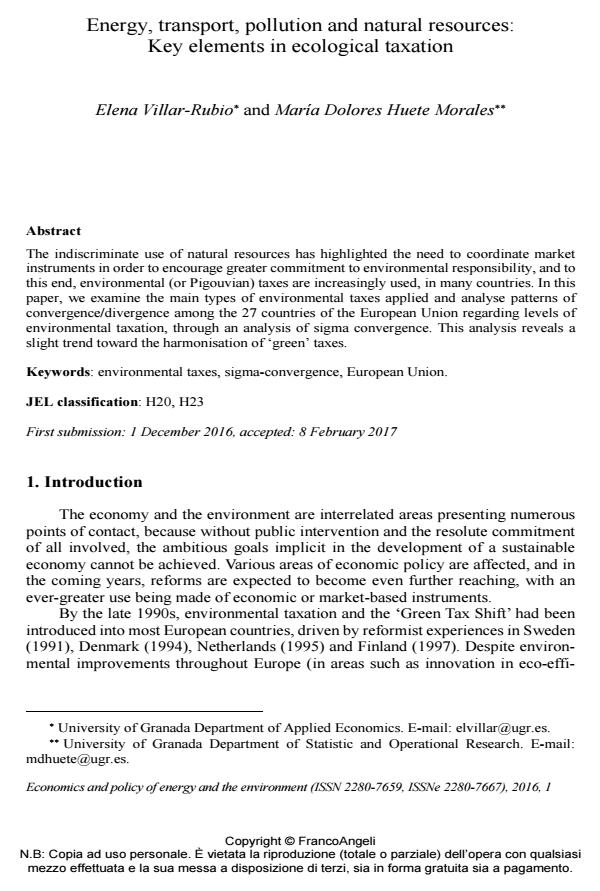Energy, transport, pollution and natural resources: Key elements in ecological taxation
Journal title ECONOMICS AND POLICY OF ENERGY AND THE ENVIRONMENT
Author/s Elena Villar-Rubio, María Dolores Huete Morales
Publishing Year 2017 Issue 2016/1
Language English Pages 12 P. 111-122 File size 851 KB
DOI 10.3280/EFE2016-001006
DOI is like a bar code for intellectual property: to have more infomation
click here
Below, you can see the article first page
If you want to buy this article in PDF format, you can do it, following the instructions to buy download credits

FrancoAngeli is member of Publishers International Linking Association, Inc (PILA), a not-for-profit association which run the CrossRef service enabling links to and from online scholarly content.
The indiscriminate use of natural resources has highlighted the need to coordinate market instruments in order to encourage greater commitment to environmental responsibility, and to this end, environmental (or Pigouvian) taxes are increasingly used, in many countries. In this paper, we examine the main types of environmental taxes applied and analyse patterns of convergence/divergence among the 27 countries of the European Union regarding levels of environmental taxation, through an analysis of sigma convergence. This analysis reveals a slight trend toward the harmonisation of ‘green’ taxes.
Keywords: Environmental taxes, sigma-convergence, European Union.
Elena Villar-Rubio, María Dolores Huete Morales, Energy, transport, pollution and natural resources: Key elements in ecological taxation in "ECONOMICS AND POLICY OF ENERGY AND THE ENVIRONMENT" 1/2016, pp 111-122, DOI: 10.3280/EFE2016-001006